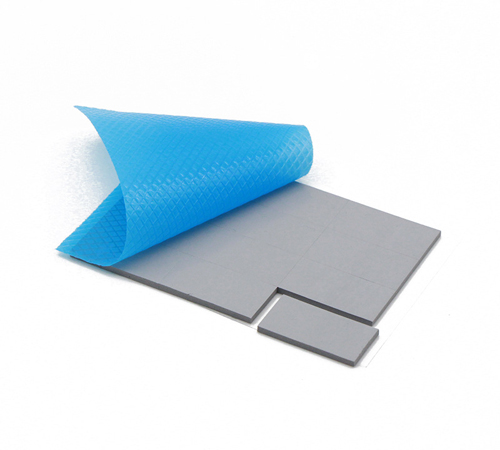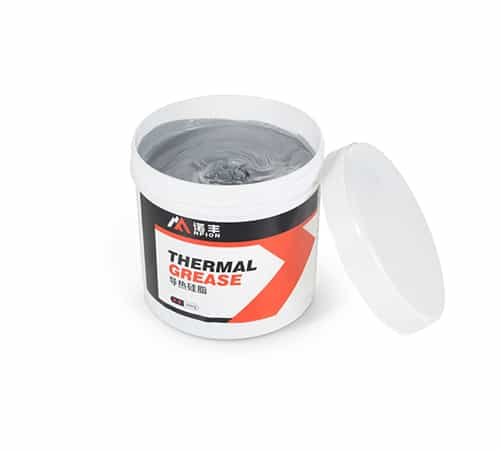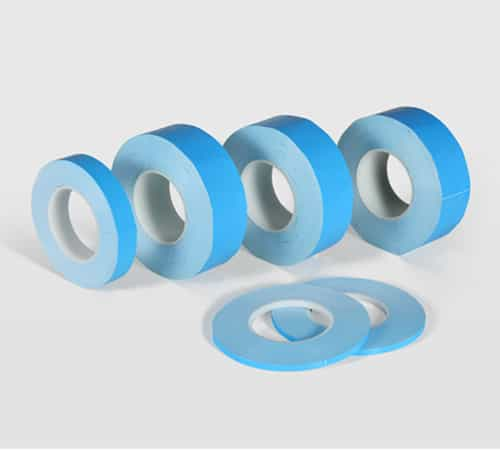In the field of heat conduction and thermal management, thermal resistance and thermal impedance are two important concepts. Despite their similar names, they differ significantly in terms of their physical meaning, application scenarios, and calculation methods. This article will delve into the differences between thermal resistance and thermal impedance from various angles to provide readers with a comprehensive understanding of these two concepts and how to correctly apply them in practical applications.
The Basics of Thermal Resistance
Definition and Calculation
Thermal resistance refers to a material's ability to resist the flow of heat and is usually denoted by the symbol Rθ. Its definition is similar to that of electrical resistance in electronics, where thermal resistance equals the temperature difference divided by the heat flow. The mathematical expression is:
Rθ =ΔT/Q
whereΔT is the temperature difference between two points and Q is the heat flow through the material.
Units and Physical Meaning
The unit of thermal resistance is K/W (Kelvin per Watt), which indicates the temperature increase per watt of thermal power. In practical applications, thermal resistance is often used to describe the thermal performance of conductive materials, heat sinks, and electronic components. For example, a heat sink with lower thermal resistance indicates higher cooling efficiency.
Influencing Factors
The size of thermal resistance is affected by various factors, including the thermal conductivity of the material, geometric dimensions, and contact thermal resistance. Materials with high thermal conductivity, such as copper and aluminum, have low thermal resistance, while materials with low thermal conductivity, such as plastic and air, have high thermal resistance. Additionally, thermal resistance is influenced by the condition of the interface contact; the smoother the contact surface, the lower the contact thermal resistance and the total thermal resistance.
The Basics of Thermal Impedance
Definition and Calculation
Thermal impedance is an extension of thermal resistance in the time domain, representing the material's or system's ability to resist heat flow at different frequencies. Thermal impedance is usually denoted by the symbol Zθand its definition is similar to thermal resistance but considers time factors. The mathematical expression for thermal impedance is:
Zθ(s) = ΔT(s) / Q(s)
where s is the complex frequency variable in the Laplace transform, and ΔT(s) and Q(s) are the Laplace transforms of the temperature difference and heat flow, respectively.
Units and Physical Meaning
The unit of thermal impedance is also K/W, but it is a complex number containing magnitude and phase information. This means that thermal impedance not only describes the temperature change caused by heat flow but also reflects the time delay and dynamic characteristics of the thermal response. In frequency domain analysis, thermal impedance can describe the thermal response characteristics of a system at different frequencies, which is particularly useful for analyzing complex thermal management systems.
Influencing Factors
Similar to thermal resistance, thermal impedance is influenced by factors such as thermal conductivity and geometric dimensions, but it also relates to the system's thermal capacitance and thermal time constant. For example, a system with large thermal capacitance has a slower thermal response, resulting in higher thermal impedance at low frequencies; at high frequencies, the influence of thermal capacitance diminishes, and thermal impedance is primarily determined by thermal resistance.
Major Differences Between Thermal Resistance and Thermal Impedance
Static vs. Dynamic
Thermal resistance is a static parameter that describes a material's ability to resist heat flow under steady-state conditions. It does not consider time factors and only reflects the performance of the system in thermal equilibrium. Thermal impedance, on the other hand, is a dynamic parameter that takes time factors into account and describes the system's thermal response under non-steady-state conditions. This makes thermal impedance more important in analyzing dynamic thermal processes, transient thermal management, and periodic thermal loads.
Time Domain vs. Frequency Domain
Thermal resistance is mainly analyzed in the time domain and is suitable for steady-state thermal analysis and simple heat conduction problems. Thermal impedance, however, is analyzed in the frequency domain, converting time-domain thermal problems into frequency-domain problems through the Laplace or Fourier transform. This method can reveal the frequency response characteristics of the system, helping to understand and optimize complex thermal management systems.
Application Scenarios
Thermal resistance is widely used in evaluating and selecting appropriate cooling solutions for electronic components, heat sinks, and thermal conductive materials. Thermal impedance is more frequently used in dynamic thermal analysis, such as transient thermal management, thermal pulse analysis, and periodic thermal load analysis. In these applications, thermal impedance can provide more comprehensive information than thermal resistance, helping engineers design and optimize thermal management systems.
Considerations in Practical Applications
Thermal Management of Electronic Components
In the thermal management of electronic components, thermal resistance is typically used to evaluate the performance of heat sinks and thermal conductive materials. For example, transistors, integrated circuits, and other components generate heat during operation, which needs to be conducted to the environment through heat sinks or thermal conductive materials. Selecting materials and heat sinks with low thermal resistance can improve heat dissipation efficiency, lower the operating temperature of components, and extend their service life.
However, in some high-frequency applications, such as RF circuits and high-frequency switching power supplies, the role of thermal impedance is more prominent. These systems have dynamically changing thermal loads, and traditional thermal resistance analysis cannot fully describe their thermal behavior. By analyzing thermal impedance in the frequency domain, the system's thermal response at different frequencies can be more accurately predicted, optimizing thermal design.
Transient Thermal Management of High-Power Devices
For high-power devices such as power semiconductors, lasers, and LEDs, transient thermal management is a crucial issue. These devices generate significant heat in a short period, which, if not dissipated promptly, may cause overheating and damage. In this case, thermal impedance analysis can reveal the transient response characteristics of the thermal system, helping design efficient cooling solutions.
For example, LEDs produce substantial heat when first turned on, leading to a rapid temperature rise. Through thermal impedance analysis, the thermal behavior of LEDs at different operating cycles and frequencies can be understood, enabling the design of heat dissipation systems with rapid response capabilities to avoid thermal accumulation and damage.
Optimization of Thermal Interfaces
In many thermal management applications, the contact thermal resistance of thermal interfaces is a critical factor. Contact thermal resistance can significantly affect the overall thermal resistance and thermal impedance, reducing the system's heat dissipation efficiency. By optimizing interface materials and processing techniques, contact thermal resistance can be reduced, improving the system's thermal performance.
Thermal resistance and thermal impedance analysis play important roles in this process. Thermal resistance analysis can help identify the primary sources of thermal resistance at interfaces, while thermal impedance analysis can provide information on dynamic thermal behavior. Combining these two analysis methods can design optimized interface materials and structures, enhancing heat dissipation efficiency.
Conclusion
Thermal resistance and thermal impedance are two important concepts in thermal management, differing significantly in terms of definition, calculation methods, and application scenarios. Thermal resistance is primarily used to describe thermal performance under steady-state conditions, while thermal impedance considers dynamic characteristics and is advantageous in analyzing complex thermal management systems.
By understanding and correctly applying thermal resistance and thermal impedance, engineers can design more efficient thermal management solutions to meet the heat dissipation needs of modern electronic devices and high-power equipment. In the future, with continuous technological advancements, the analysis methods of thermal resistance and thermal impedance will continue to evolve, providing solutions for more complex thermal management challenges.
 CN >
CN >



